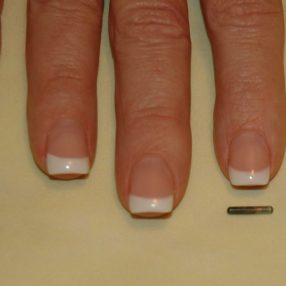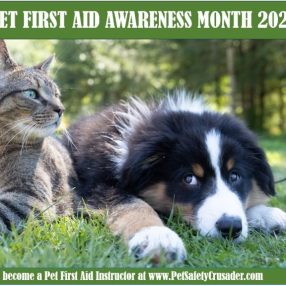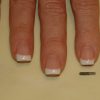
It can happen. Your curious canine pal goes head-to-head with an animal of a wilder species! It’s instinctual, but it’s up to you to keep your charge safe, no matter if the wild creature is bigger or smaller than you dog. Although toad poisoning may seem uncommon to most of us, the ASPCA Animal Poison Control Center (APCC)₆ does get calls from upset pet parents after their best friends have had a head-to-toad encounter!
Amphibians are equipped with a mucous coating that helps them evade predators (yep, they don’t want to be eaten!) and can serve as a defense should your dog, or other animal, try to lick, chew or consume them. Most toads in the United States, secrete mild toxins, but even mild poisoning can cause dramatic signs in your pooch. Hyper-salivation, foaming and pawing at the mouth are common, and if the toad is ingested, vomiting can also occur.
Seriously Poisonous Toads
Two species of toads can cause life-threatening symptoms in your dog. The Cane Toad⁷ (aka Marine, Giant or BufoToad), and the Colorado River or Sonoran Desert Toad⁸ secrete bufotoxins, which depending on the type can cause irregular heartbeat, seizures and are hallucinogenic in nature. Early signs of distress are similar to those mildly toxic toads cause, but within 30 minutes to several hours, your dog can progress to shock and neurologic issues that can be fatal, so an immediate veterinary visit is a must!
The Cane Toad, found in Southern Georgia, Florida, Southern Texas and Hawaii, as well as Puerto Rico and Australia, is typically 6” and weighs close to 3 lbs. Olive in color, his skin is dry and warty with large triangular gland behind each eye and no crest on the head. The Colorado River Toad however, can grow even a bit larger, has oval glands behind each eye and visible glands on the hind legs, and a shiny, warty skin. Arizona, New Mexico and California are where your pup is likely to encounter this toad, but if your dog licks a toad in other parts of the United States, you can likely expect mild symptoms. No guarantees though. Every pet is a unique individual, and how each dog reacts to a toxin can be different. Supervise pets all times when outdoors, but especially dawn, dusk and nighttime, when wildlife roam. Keep dogs on-leash or closely watched in a fenced yard, and encourage clients to work with dogs (even cats) to develop a strong ‘recall’ so they ‘come’ on command and without delay.
What to Do Should Your Dog Goes Head-to-Toad
- Take a photo! It could help your veterinarian determine appropriate treatment.
- As long as your dog is conscious, rinse his mouth for a good 5 minutes, taking extreme caution to hold your dog’s head down and make sure you point the spray bottle or hose FROM the back of the mouth so that water and toxin runs out of the front of the mouth. You do NOT want your dog to swallow the toxin or aspirate the contaminated water into his lungs.
- Get to veterinarian at once, monitoring vitals on the way. Be prepared to treat for shock or cardio-pulmonary arrest.
Preventing an Encounter
- Water, including pet water bowls, attracts toads, and your dog can get sick from drinking water that a toad has come in contact with, so if you must have outdoor bowls, consider a raised bowl and change the water often. Toads like damp, dark places, so remove water containers, ground-level birdbaths, wood piles to aid in toad control.
- Toads are active early in the morning and nighttime, so stay alert, especially on rainy days.
- Develop a strong “recall” in your dog and make sure he responds to “leave it.” Both commands could save your dog’s life!
Prevention said, toads are important to our ecosystem and eat many insects that destroy our gardens, so if they become a problem, consider humane methods of removing toads⁹ from your yard.
Signs of Toad Poisoning
- Hyper-salivation
- Pawing at the mouth or eyes
- Gums pale or inflamed
- Whining or crying
- Breathing difficulty
- Vomiting or loss of interest in food
- Loss of coordination
- Seizures
- Collapse
Keep in mind that these symptoms are similar to many other types of poisoning. Toad poisoning may present similar to both chocolate toxicity or antifreeze, so keeping an eye on your pooch and knowing what he gets into, is a huge part in getting him the help he needs. It cannot be overstated as to how important it is that you get your dog to veterinary help at once if you suspect toad poisoning. Dogs that reach medical care within 30 minutes of exposure have the best chance of a good prognosis!
Denise Fleck is the Pet Safety Crusader™ having personally taught more than 30,000 humans to rescue Rover or help Fluffy feel better. Her mission is to help YOU make a difference in the life of an animal through Pet First-Aid, Senior Pet Care and Disaster Preparedness classes, her “The Pet Safety Bible,” and the dozen other books she has penned. Learn more at www.PetSafetyCrusader.com
FOOTNOTES
⁶ ASPCA Animal Poison Control Center (APCC), https://www.aspca.org/pet-care/animal-poison-control
⁷Cane Toads, National Geographic, https://www.nationalgeographic.com/animals/amphibians/c/cane-toad/










